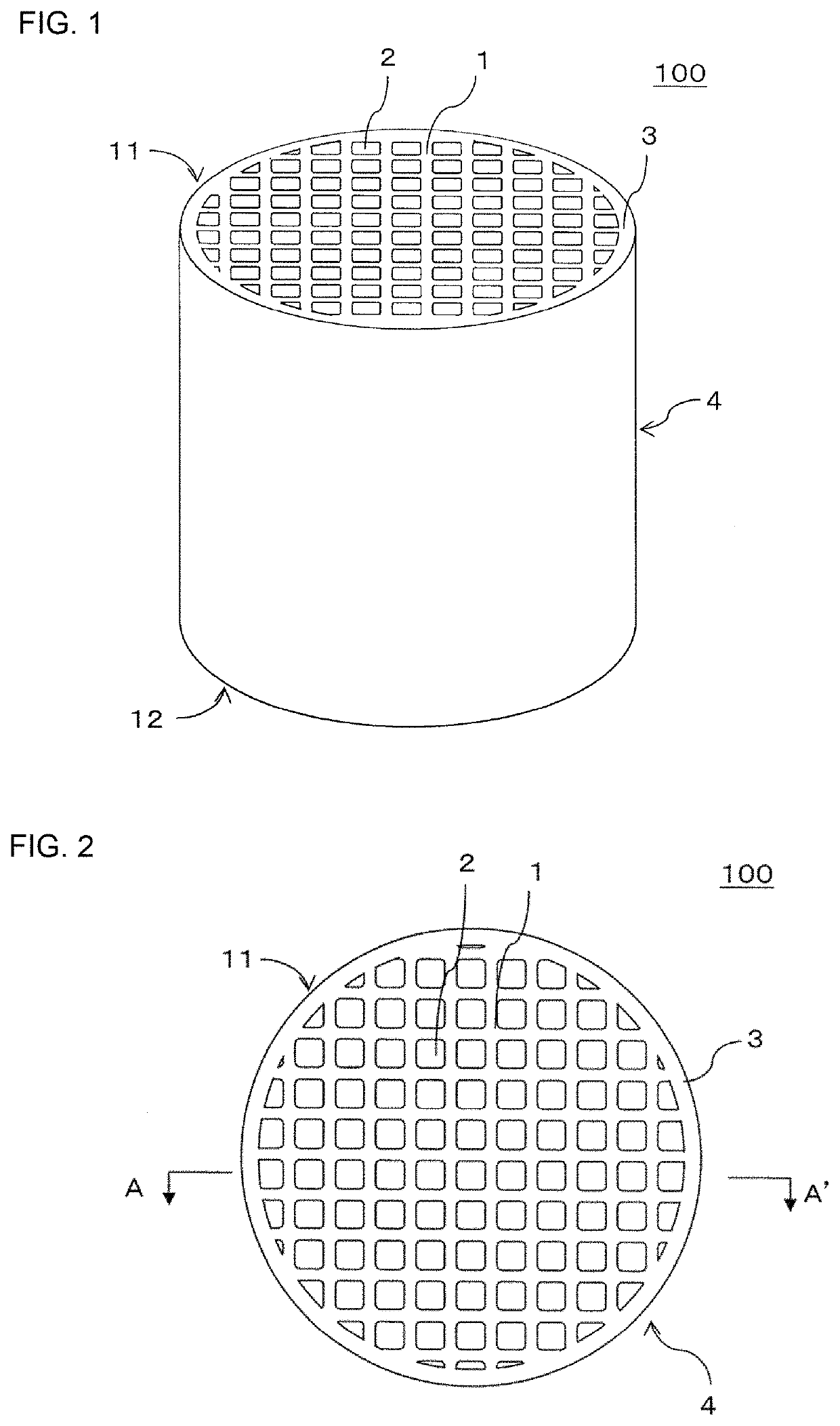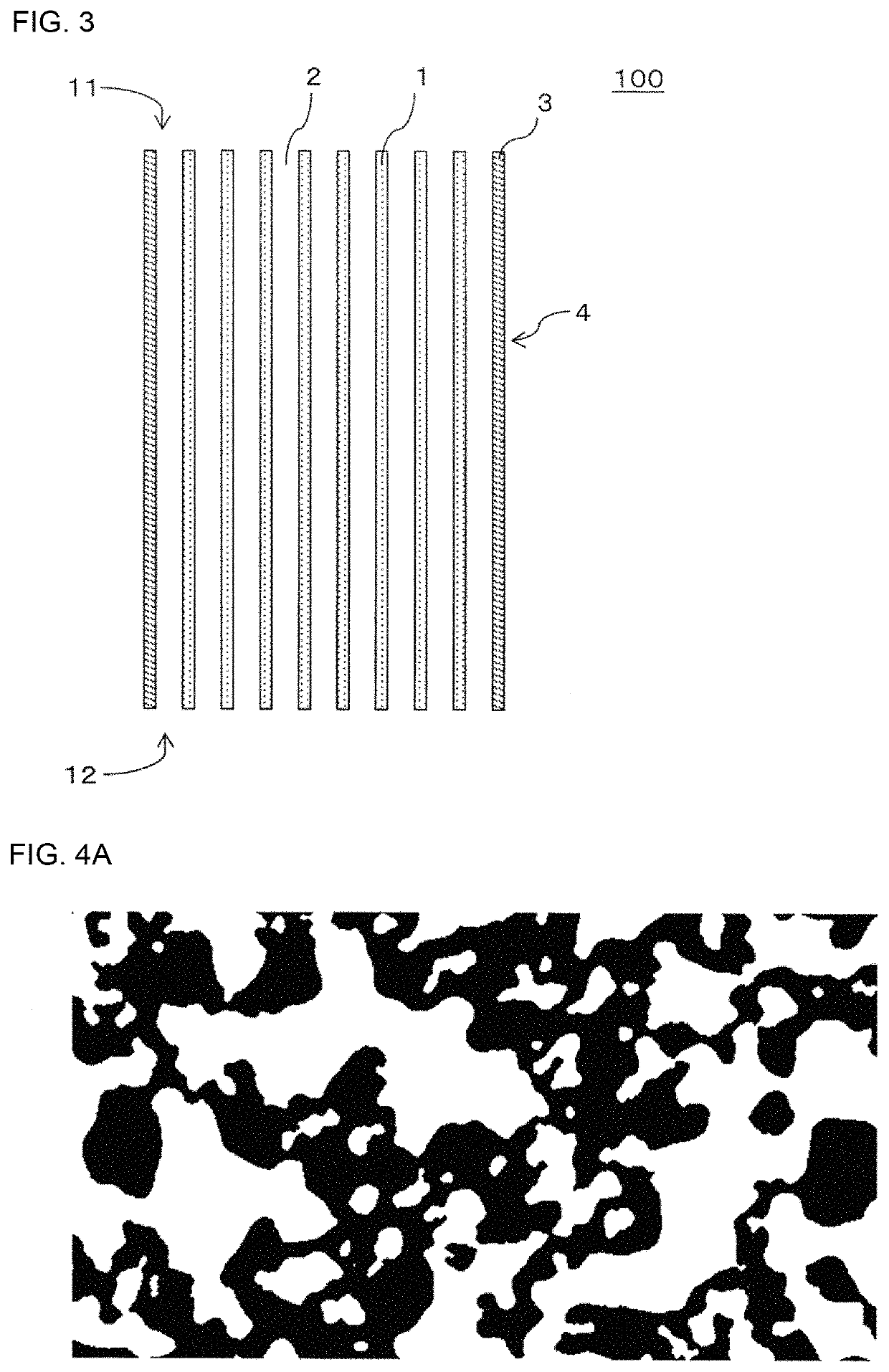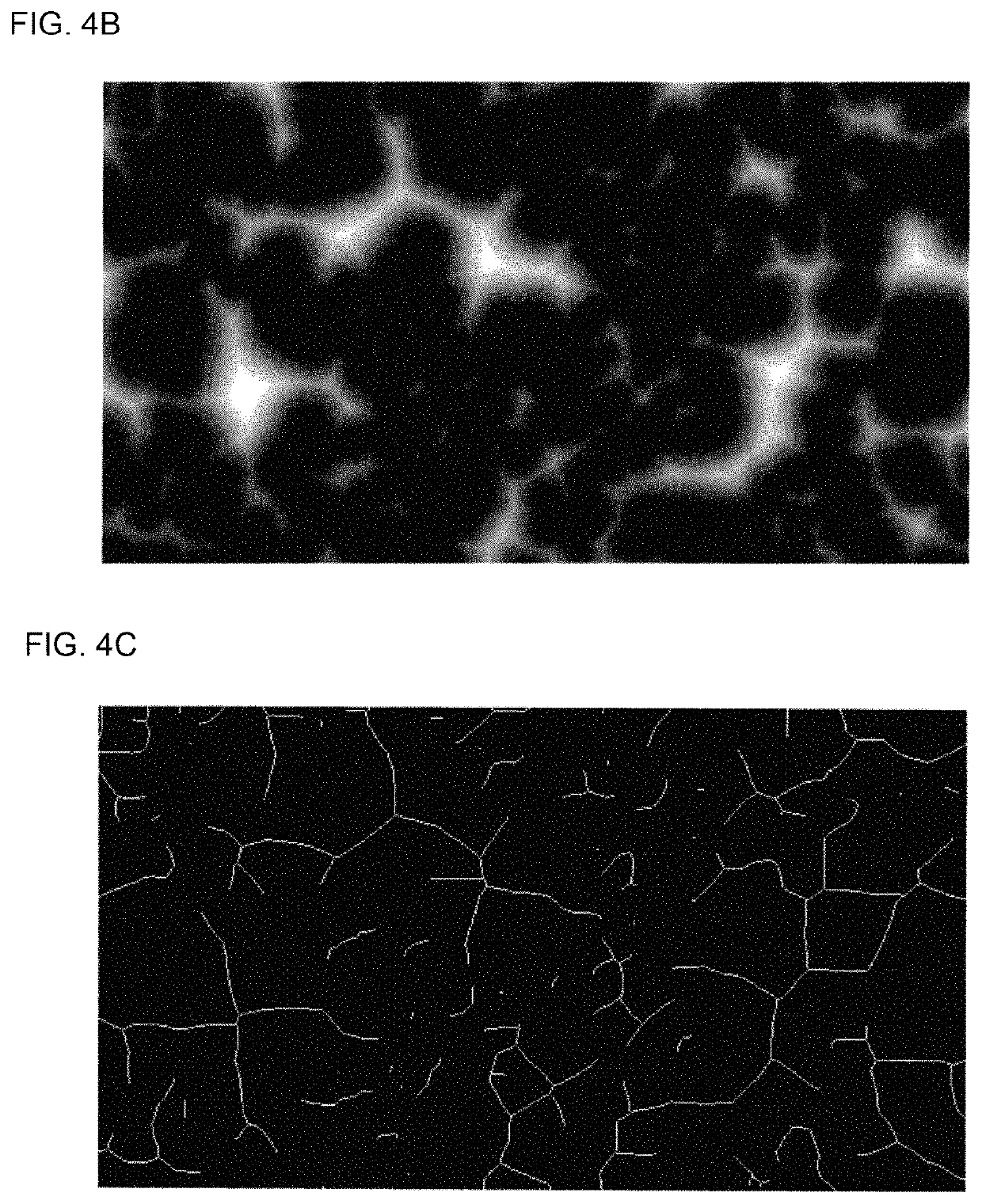Honeycomb structure
a honeycomb and structure technology, applied in the field of honeycomb structure, can solve the problems of difficult to lower the porosity, non-uniform microstructure, and large pore diameter of the pore, so as to suppress local excessive temperature rise, reduce the difficulty of lowering porosity, and reduce the difficulty of reducing the porosity
- Summary
- Abstract
- Description
- Claims
- Application Information
AI Technical Summary
Benefits of technology
Problems solved by technology
Method used
Image
Examples
example 1
[0117]In Example 1, silicon raw material powder A was used as the silicon raw material powder. For the forming raw material, 5,000 g of silicon raw material powder A, 221 g of cordierite powder with the average particle diameter of 2 μm, and 350 g of methylcellulose as binder as well as appropriate amount of water added were prepared.
[0118]Next, the obtained forming raw material was kneaded by a kneader, and then was pugged by a vacuum pugmill to form a kneaded material. Next, the obtained kneaded material was extruded to prepare a honeycomb formed body. The honeycomb formed body was such that the partition wall thereof after firing had the thickness of 300 μm, and the cell density of 46.5 cells / cm2. The honeycomb structure body of the honeycomb formed body was a quadrangular pillar shape, in which the length of one side of the end face was 35 mm after firing. Next, the honeycomb formed body was dried to obtain a honeycomb dried body. Drying included microwave drying, followed by ho...
example 2
[0142]In Example 2, silicon raw material powder A was used as the silicon raw material powder. For the forming raw material, 5,000 g of silicon raw material powder A, 50 g of cordierite powder with the average particle diameter of 2 μm, and 350 g of methylcellulose as binder as well as appropriate amount of water added were prepared. Then a honeycomb structure was obtained using the obtained forming raw material similarly to Example 1 other than that the temperature condition for firing was changed as follows. Firing in Example 2 was performed under the firing condition a.
example 3
[0143]In Example 3, a honeycomb structure was obtained similarly to Example 2 other than that the amount of cordierite powder to be added to the forming raw material was changed to 739 g, and the temperature condition for firing was changed as follows. Firing in Example 3 was performed, including temperature rising to 1,200° C. in 2 hours firstly, followed by temperature rising to 1,380° C. in 60 hours and then the temperature was kept at 1,380° C. for 2 hours. Firing was performed in the Ar atmosphere. Hereinafter this temperature condition for firing is called “firing condition b”.
PUM
| Property | Measurement | Unit |
|---|---|---|
| particle diameter | aaaaa | aaaaa |
| thickness | aaaaa | aaaaa |
| length | aaaaa | aaaaa |
Abstract
Description
Claims
Application Information
 Login to View More
Login to View More - R&D
- Intellectual Property
- Life Sciences
- Materials
- Tech Scout
- Unparalleled Data Quality
- Higher Quality Content
- 60% Fewer Hallucinations
Browse by: Latest US Patents, China's latest patents, Technical Efficacy Thesaurus, Application Domain, Technology Topic, Popular Technical Reports.
© 2025 PatSnap. All rights reserved.Legal|Privacy policy|Modern Slavery Act Transparency Statement|Sitemap|About US| Contact US: help@patsnap.com



